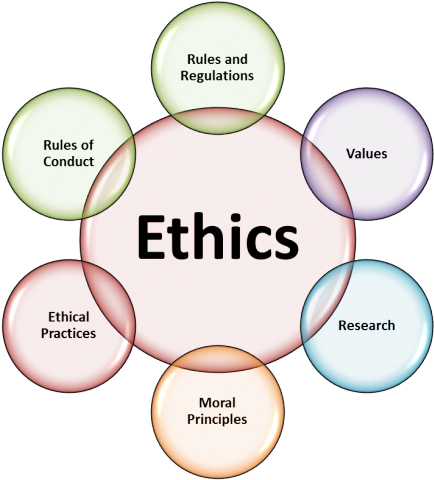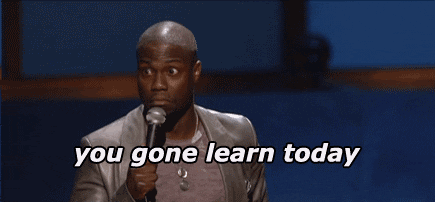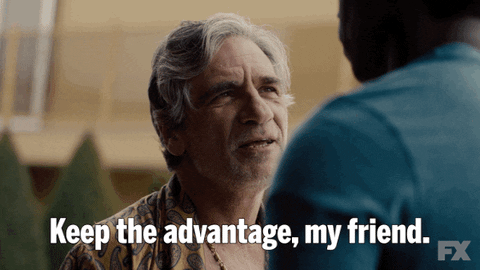Hi! I'm Nikhil Shahapurkar. I'm a Content Specialist and Digital Marketing Enthusiast
Don't wanna be here? Send us removal request.
Text
Business Ethics and its types
The study of right and wrong in behavior is termed as ethics. Similarity right and wrong or black and white in business terms will be termed as business ethics. The term business ethics is used widely by many people. Some people know about it and some have only heard about it. But what exactly are termed as Business Ethics? Let us find out.

Business ethics are sometimes termed as business moralities corporate ethics and professional ethics. They apply to all processes of the business and at relevant to the entire organization as with us the individual entities of the organization. The ethics are formulated in such a way that they help the business maintain a better connection with the stakeholders might be internal or external.
“It takes 20 years to build a reputation and five minutes to ruin it. If you think about that, you’ll do things differently.”
- Warren Buffet
These ethics refer to the contemporary standards of the organization and the set of values and norms which govern the behavior and the actions of an individual who is associated with the business. Business Ethics usually have two dimensions which are normative or descriptive Business ethics. The field is considered to be normative as corporate practice and a career specialization. Descriptive methods are employed by academics who attempt to understand the behavior of the business.
They are classified into different types of Business Ethics based on the categories. They are as follows:
Types of Business Ethics
1. Official responsibilities: These are the responsibilities that the person should follow when occupying a certain position in the organization. It is expected of the person to follow the standards which is why they are known as official responsibility. For example, a manager who has reporting members under him is not expected to do anything unethical which may result to set a similar example for his subordinates. Official responsibilities usually come with ethical boundaries. Being impartial to juniors, motivating them at times, giving honest and undiluted feedback about the juniors to the higher management are some of the functions which, one is expected to follow as a part of ethical guidelines under official responsibilities.
2. Personal responsibility: A person is the ultimate entity of the organization. Many individual people come together to make an entire organization. If one person fails to fulfill his moral responsibilities, then there is a very high probability that the entire organization will crumble. Thus ethical responsibility starts at a personal level which is also known as personal responsibility. The person is expected to remain morally responsible even if no one is watching. Being true to work ethics has long-term effects and not short-term effects. It is necessary to have a proper definition of ethics so that the clash of interest does not occur. It so happens that a person thinks that he is being socially and morally responsible but in reality is breaking the law by being immoral. Right from drinking and driving to bribery and bureaucracy, the person should be self-aware about the moral ethics.

3. Personal Loyalties: Personal loyalties are considered to be very strong standards of ethics which may not be applied when action is being taken towards an individual. The loyalties of a subordinate towards his superior and superiors’ loyalty towards his subordinate are included in personal Loyalties. They are further classified as:
A. Loyalties of subordinate towards his superior: If the subordinates have strong loyalty towards their seniors then they may turn a blind eye towards the errors and misdoings committed by the seniors and in fact attempt to defend them. For example, if a fellow HR of an organization is promoting employees on personal choices it creates a bad impression for the organization since wrong people are being promoted. This will hamper the growth of the organization in the future and increase the turnover of the employees.
B. Loyalties of senior towards his junior: A strong personality of a senior towards his subordinates will cause a problem to the organization in the long run. The senior will always turn a blind eye towards the errors committed by his subordinates. This may be done because the senior wants to avoid hurting the junior employees or out of favoritism but in the long run, this backfires and the team collapses since the team members are not good. The employees should be judged on their performances and not on their favoritism towards seniors. This may not make good friends out of the employee but it sure does create a good employee out of it. A balance is required while having a relation or loyalty towards the juniors.
C. Corporate responsibilities: Corporate have a responsibility towards the society. Each individual has a moral obligation towards society and organization without any exception. It will not be necessary that the moral code of the organization is exactly similar to the moral codes of the employee's but it should be in line with the same. Alignment of the vision and mission should be calibrated from time to time.
D. Organizational Loyalties: When employees have a deep sense of loyalty and commitment to the organization, then, it is termed as organizational loyalty. The commitment towards your organization is so intense that at times the employees will neglect their own self-interest for the organization's sake. When an organization is good in having an ethical and excellent work culture, organizational loyalties are seen in employees.
E. Economic responsibility: Using the resources in an efficient way and engaging in activities which increase profit without fraud is the social responsibility of any business. That is why each and every business should contribute to the general welfare of society by making economical use of resources. Sharing the economic resources with the society and its individual should be the aim of every organization.
F. Technical morality: Technical morality are the types of Business ethics which play a crucial role in deciding which services and products are to be produced. The technological environment influences in terms of investment. It is expected of a manager to refuse to compromise on quality if he has decent technical morality. Technological advancement is the aim of almost every organization but it comes with a price that is increased price of the product which the organization should be able to afford and not lower the standards. It is expected of the organization to not to accept lower standards once there is a technological upgrade.
G. Legal responsibility: The framework for the working of every organization is provided by the legal environment and it is expected of the business to stay within the framework provided by the Legal environment. The ability of the business to do that is entirely dependent upon our business can meet the challenges which arise out of the legal framework.
4. Departmental responsibilities: Each and every department in the organization has a responsibility towards the stakeholders and that is why it is important to maintain the ethical obligations by every department because even if one of the departmental responsibilities is not executed properly, then the entire organization may have to pay its price. Following are a few types of business responsibilities of each department:
a. Finance Department: Finance department is associated with financials of the company. The cash flow, financial outgoings, salaries, expenses, all fall under finance departments. It is very important that the finance department maintain moral obligation so that the stakeholders of the organization – both internal and external, enjoy the profits. An organization which is not transparent will have financial instabilities and in turn, the entire organization will suffer.
b. Marketing Department: The marketing of the product is to be done under ethical guidelines. False claims, misrepresentations of the product, false claims, hazy and unclear advertisements are not encouraged in the marketing industry. Customers should be given a clear picture of the product, its features, and benefits along with its shortcomings if any. These rules are stricter in pharmaceutical industries where marketing of medicines and drugs is not allowed to the public in most of the countries. The marketing of the medicines and drugs is allowed only to the healthcare practitioners with all the benefits and side effects of the drugs. A sale is also considered as part of marketing whereby baseless claims and promises during the promotion of the products are discouraged. As much as possible, the sales claims are kept black and white on paper so as to avoid any misinterpretation.
c. Administrative Ethics: It is often seen that bureaucracy is perpetuated in the organizations at individual levels. Employee favoritism, bias towards a particular employee owing to gender, minority or religious or racial difference should be discouraged by the official standards as well as by the other employees.
Business ethics are an integral part of success of any and every organization and if not followed, the company may have to pay a heavy price for it.
3 notes
·
View notes
Text
Dealing with Change
2020 was the year of change for all of us. 2021 is no different. In fact, we all deal with change often.
“Everyone thinks of changing the world but no one thinks of changing himself.”
- Leo Tolstoy
It was the Greek philosopher Heraclitus who said that ‘Change is the only constant in human lives.’ Heraclitus was a philosopher whose thoughts inspired Aristotle and still inspire people. This is a saying which has remained true for centuries. But how to actually deal with change? That new work schedule, new boss, new applications you have to learn everyday, new laws and rules that come up. How to deal with so much of change all the time?

It is always important to remember that change is a crucial part of everyone’s life. We cannot avoid the change whatsoever, and it is better if you tell yourself that you should seek positive things from it. As soon as we accept it, we can let go of many issues facing us.
Most of the examples we will be discussing in this article will be related to the corporate world:
Here are a few strategies to deal with change.
1. Learn from it

This is the best thing you can do to deal with the change. In the corporate world, you always have to deal with changes all the time. The boss changes, rules of the company changes, HR changes, your colleague changes, and many more things always change. The corporate is like a continually transforming kaleidoscope, which changes its shapes all the time. There is no stopping the change that happens all the time in an elite corporate structure. There could be multiple reasons for the change, but the important thing is to learn from it. Learn from the new manager who has joined your organisation and learn from the new car league, who is newly joined. It would help if you kept learning from the change so that when you have to deal with it, you know what others are doing or have done and can follow suit or decide your own course of action. Learning from others will either help you find your own way or tell you what not to do, either way, it benefits you.
2. Accept it

This is the best strategy while dealing with change. Change is going to come whether you want it or not. The markets change, people change, and their demands change. With that, your company will change, and so will your role. The best thing that you can do is accept the change which is happening. Some people may not be that easily changeable or modifiable like others. And in such a case, it is recommended that the person should take time to accept the change. If you need time to accept the new role that has been offered to you, talk to your manager or your seniors, apply for leave, and take some time off. Use this time off to prepare yourself for the inevitable change and do everything to make yourself comfortable with the upcoming change. Resisting the change will make no good for you as well as for anyone else. Resisting the change will create conflicts among you and others. It will also expose your inefficiencies, which will make others question your abilities. Consider that even if you resist the change for some time, it will be back in some other form because change is always constant. If you decide to change your job because you cannot cope up with the change, then there are two essential things in this:
a. You are changing the job, which means you are accepting change even though it is of a different kind and,
b. even if you leave, the change is inevitable. Remember that change is new for everyone around you equally. And while most of them accept it, there are always some people who will resist. Make sure that you are in the first group rather than in the second one.
3. Teach others

There may be incidents in which Other people or other colleagues in your office may not be comfortable with the change. Ensure that this does not happen because a chain is strong only as much as its weakest link. Use your experience to make the other person comfortable with the change. If you have previous experience regarding dealing with change, then share it with the person. If you naturally adapt to change, then try to put it in simple words to make the person acceptable to the change. Do not boss around or order around them to accept the change. Take one step at a time, but keep it continuous and consistent. Ensure that you teach people at their own pace rather than your pace.
4. Dont get comfortable

So now, change has happened, and you have accepted it. But it would be best if you didn’t get comfortable with it. The change that has happened is not forever, and that change is going to change at a certain time to make way for something new. If you get comfortable with the change you have just adopted, then you will not be ready for the change that is going to follow. You will again face the same problem in adapting to this new change. Sometimes there may be a big difference between two changes, which will be difficult for you to adapt, and sometimes both the change may be similar in many aspects, which will make it easier for you to adapt. Be ready to accept that this is temporary and may change again. For example, it can be as little as changing your regular cereal brand or as huge and challenging as learning a new language in a new country.
5. Prepare to change, Again!

As it is already said hundreds of years ago that change is the only constant thing in human life, you have to be prepared for a change again. Sometimes you may have to change your city, or your job or any little or big thing. This can lead to significant alterations in your life, or it may have minimal effect, but the point is to be prepared for a change. It may be expected change or an unexpected change, but you must prepare yourself as early as possible in either case. For example, people who did not prepare themselves to adapt technology are facing many problems every day since technology is everywhere.
On top of that, technology is evolving. Therefore people who adapted to button phones are facing the change again to adapt to touchscreen phones. Going ahead, the technology will change again, and people will have to adapt to it. Similarly, you will have to adapt to the change as and when it happens. The faster you adopt, the better it will be for you.
Change happens whether you may like it or not and it keeps happening continuously. All of us have unlimited potential. We simply need to unlock it!

0 notes
Text
Want to make better decisions? Better read this
Making decisions is a process that we encounter every single day. Should you take that job? Should you take that promotion? What if you don’t go to work today? Is that presentation so important? What side should you choose?

We encounter questions like these often every day. While some decisions have an established method, like steps to follow in pricing decisions, others are more complicated and require in-depth analysis. There are multiple elements which affect decision making processes like the nature of decision, people involved in it, their relevance to your decision, etc. Making timely decisions is important but at the same time, making correct decisions is equally crucial because although time and tide wait for nobody, haste makes waste.
Tips for making better decisions
They say you have two ways: Either take the right decision or make the decision right. While there is no single established way to make right decisions, the following are few tips that can commonly be used to ease the decision making:
1. Don’t stress

When you have a decision to make, you are faced with most commonly, two options. You have to choose either of the two options. Unfortunately, stressing out is not an option in any case. Therefore there is no point in letting the stress get the better of you. Because in the end, you will have to make the decision anyway. Stressing out will simply waste your time.
2. Listen to your Gut feeling

Most of the time, it so happens that we are afraid to make a decision because of the result. In spite of careful analysis and long-term planning, there is always a chance that the decision may go wrong. In such cases, trust your gut instinct. This is because your gut instinct is usually the one that is correct and with which you truly want to go.
3. Weigh the advantages and disadvantages

Every decision is going to have certain advantages and disadvantages. While advantages are always beneficial and they’re not something you would deny, focus on the disadvantages. The limitations are the ones with which you have to live, and if you are okay with those limitations, the pros are anyway there. There is no decision that will not have a disadvantage because it’s like every rose has its thorn.
4. Gather information related to options

In most of the cases, your decision without two or more options. Before you make a good decision, gather all possible information related to those options. Figure out all the pros and cons of those options and tally it with what you want. What are the problems you need to solve and the reason for those problems? Answer these two questions and then start weighing out options. Sometimes it so happens that while gathering information, you realize that this is not something you want. Therefore in such cases, you abandon the option completely. This will not happen unless and until you start gathering information about those options.
5. Consequence analysis

Consider the options that you have and implement them one by one in your mind. Understand and analyze what will be the result when you choose those options. Focus on the outcome and compare it with your ideal situation, which you want. If the option is the opposite of your ideal situation, then you have to abandon it completely. If the option is close enough, then you can go for it. This is a very important step because although the options may sound comfortable when you analyze them in the real world, you understand their true nature.
6. Talk it out

In most cases, having another person’s perspective will always help shed light on your issue with a new perspective. Talk it out with someone close to you and who is not judging you for your decisions. The best person for this is the one who has already gone through such a decision process, but if you don’t know any such person, then dial the number of your best friend.
7. Write it down

A mind is a chaotic place, and although it may seem to us that it is sorted out, it is, in fact, quite the opposite. Analyzing your options in mind, calculating their pros and cons, analyzing them in futuristic perspectives is a good thing. But if you perform all the analysis in your mind, then there are chances of it going wrong. The best way to solve such a problem is the old pen and paper method. Write down all the pros and cons in front of each other. Looking at all of them at once is bound to spark you with a new thought.
8. Test it

In some decisions, you may be allowed to test it before you make it. For example, if you’re planning to change your career, take up an internship in that field and see how you feel about it. Or try to chat with your new boss in order to gain perspective on the company. Testing out is a great option before deciding because it will give you real facts and weed out many assumptions from your mind. It will get you to your decisions faster.
9. Flexibility

It is essential to have a flexible approach while making a decision. This is because being stubborn is not helpful in the decision-making process. Changing your career just because it’s not working out with your boss is not a good option. You can try changing your workplace or changing your department in an existing workplace. In either case, it is important to be flexible and open to multiple options rather than getting stuck in the available options.
Decision making is a routine but vital activity and it would not be an exaggeration to say that your life is nothing but a series of decisions you have made which has got you where you are. Deciding on the right alternative is important since not only yours but many people’s lives may be attached to your decision. Therefore every decision should be taken carefully only after weighing all available options and their pros and cons.
In the end, trust yourself. You got this!

0 notes
Text
How to write web content
Most businesses have understood the importance of content on their websites which is why good content writing has become extremely popular and crucial for the success of the business. One of the primary difference between the success and failure of a brand is strong and weak content. More than 1.5 billion websites streaming on the internet right now and more than 3.2 billion Google searches are being done every single day.

To stand out in such a crowded please requires extraordinary content which can help you separate from the rest. The content should be original, informative, should address concern of the reader, if any, should be readable easily and should be free from any grammatical errors. A good content can fetch you a long term revenue and provide excellent return on investments. This is the reason why having excellent content is one of the primary keys to the success of a brand.
Following are few of the tips to write better content.
1. Extensive keyword research
The first thing that you need to understand is what are you writing about and then you can add search engine optimization to make it a success. Simple keyword research will help you know what topics your target audience is searching on Google and find them relevant. This keyword research will help your content to stand out from the competitors and will also help to highlight your strengths and front of the customers. Good keyword research will help you to understand the keywords that are required in order to pull the traffic on your website and along with it, the return on investment is very good on it. All you need to do is that extra time researching about keywords.
2. Keyword density
Now that you have a good keyword to start with it doesn't mean that adding extra keywords your content will make it more valuable or readable or even search friendly. A content that has more density of keywords looks a little untrustworthy in the eyes of the customers as well as for Google. The conversion rate may possibly go down and readers will start to see this as a low quality page. When the customers open your web page browse through it and leave it immediately within a specified time it is called as bouncing of customers. Adding extra keywords is also increase the bounce rate and search engines will push down your webpage over time. Because the smartness of the search engines has increased these days adding keywords and making it grammatically incorrect just because the customers are searching for it will not rank your page. Having the right density of keywords is important in order to rank the article. Although every website out there has different standard, usually, including keywords 1 – 2% of total word count is optimum for your article. It doesn’t make it too less and also doesn’t seem exaggerated and forcefully crammed up.
3. Use call to action buttons
You should have a goal before starting the website. The goal should involve action from the readers rather than simply browsing through your website. The ultimate outcome of excellent content should be the action from the readers and for that to happen you need to have a powerful CTA button. A call to action is the action requested by the website to the customer. Downloading an article or subscribing to a newsletter or sharing the content on the social media, commenting on article are few examples of call to actions that customers can take. Consider yourself as a reader of the website and think what would make you click the call to action button and use the same project by creating the content on your website. Use of the ‘call to action’ button by customers increases the credibility of the content as well as improves the visibility of the website on search engines.
4. Write right.
Many debates are going on the internet about the use of a couple of words like email or e-mail. The difference is very subtle and many websites for a long time supported the word e-mail, like the visitors but then both of them gave up and now the accepted word is email and not e-mail. Similarly, there was a debate about the word internet being used as lowercase or uppercase. Many people consider the word internet as a proper noun. The fact remains that whatever your language is, you should modify your content for the audience and not for you. If something feels right for the audience then it is right even though it may not feel right according to you. There are many guides available on the internet which can help you with writing the right words thereby avoiding minor mistakes which could drown your ranking in the sea of websites. You do not have to extremely accurate grammatically but your content should be of the level of an average high school student. Too many jargons or too much of grammatical errors can reduce ranking of your website.
5. Mention references by hyperlinking
When you mention the content of another website on your website then you should ensure to hyperlink it back to that website. It is considered as a good internet etiquette and you would enjoy the same courtesy back from the other website. It is important to cite your resources even if the web traffic is directed to another website. You can use other tools such as open the link in another window if you are concerned about keeping the traffic on your website. Citations also help to get backlinks to you which is the right thing to do. More often than not websites see the link and your effort and will thank you with the reciprocal link.
6. Feeling is important

There are many factors which play together in order to make the content viral and promotion is one of the huge contributing factors to this. Along with promotion the brand identity all the time of the content or share that play a role in order to make your content viral. But there is one common thing in every viral content which is an emotional impact. The audience should feel and emotionally connect with the content and only then they will click on call to action. It is human nature and tendency to share what we like and if some article makes you feel good there are chances that people share it in order to make their friends and relatives feel the same. Always think about the fact that what could be better about the story and how could you give more emotional impact to this content.
7. Content plus action
It is very important to have an excellent choice of words in order to create an impact on the reader. The web article should be direct and should appeal to the reader. For example a common tip that is given on writing web content is not to use the passive voice. Passive voice happens when you use subject and object in the same sentence. For example, "Germany attacked many European countries during World war" and "Many European countries were attacked by Germany." The latter sounds less exciting because active voice invokes emotions immediately in the minds of the reader. In that case, it feels as if the subject was added by chance as the writer had forgotten to mention the subject. In the former, the subject is at the forefront and is involved in the action which creates an impact in the mind of the reader. The web content writer should be aware of exciting verbs in order to create a long-lasting impact in the minds of the readers. For example try writing "movie was dazzling" rather than "movie was fantastic" or "The new iPhone 11 is breathtakingly beautiful" rather than "The new iPhone 11 is excellent." in some cases these small word changes may, in fact, reduce your word count but it will definitely make your content more engaging and exciting for the readers.
8. Break it and make it smaller
When writing for the web you should be aware that their attention span of readers is very less. They may have more attention while reading a book but that attention span reduces to less than 10% while reading the content on the web. This is the reason why keep your paragraph smaller. A paragraph of 8 or 9 lines would be good but a paragraph of 5 or 6 lines is even better. Make it a point to keep the paragraph short even if the idea is not complete. You can take it ahead in the next paragraph and can always use the following paragraphs and explain it. Keeping the paragraphs short also adds the feeling that the content is being read faster because the audience keeps on scrolling. Use paragraphs if its an essay and use bullets if its an informational website. (Refer to Point 18 below)
9. Link updating
Internal links are a very important aspect of content and almost every content writer will know that. Using links to link other pages clear website gives an increase in the SEO and The reader will get useful info which increases the page views as well as the time on the site. Once in a while, you need to make it a point to visit your older posts in order to update the things that you have already posted. This will help to increase your search result and will make your page even more useful to the readers and also make your content fresh which will help it to rank even higher on search engines. Although it may sound a lot of work like finding a needle in a haystack it is very important to do it once in a while.
10. Use professional SEO tools
Google spreadsheet is more than enough to do a professional SEO keyword analysis along with some free tools. But usually there is a lot of data and taking through that data will make it very easy to get lost. Some SEO tools have too much data than necessary without providing the necessary tools for you to get through it. Other SEO tools break down everything according to their own system which may not give up data in order to draw your conclusions. One such as you tool is a CM brush which has given a lot of data and it is also easier to export it and analyze it by the use of another program. All the important and other text about the website are displayed to you which will add value to your keywords and also you will gain a deep insight on the performance of your website.
11. Best SEO practices
Using a keyboard multiple times is not enough but this keyword is to be used in any related phrases like meta description, or headers, or even in the alt-tag images of your website. There are many tools which can help you with the SEO if you are using WordPress than the tools called Yoast can help you for SEO. It provides a detailed content analysis of your website and also solves problems like missing keywords which could be included in the meta description and also helps you focus on minor issues like low keyword density. Use of professional tools initially, if you are just starting up with a website may seem expensive so you can always use the free tools but as you progress, you need to have paid tools for better performance of your content.
12. Reader attachment
Your content should be engaging right from the first line. A good introduction is very difficult to write you can skip it initially, write the remaining content and then write the introduction when you are ready. Once you have the entire content ready, only then post it online. If you have the introduction that is not very engaging but the main content is good, then there are very fewer chances of the reader percolating down to the main content because the introduction itself will wear him out and as mentioned earlier, the patience of readers online is very less. You should understand that your website is not literature and visitors are not there for your language but they are there to get information or to solve a problem or buy a product. If you don't show it from the first line that your content will solve their problem or provide them information then get ready to increase your bouncing rates. Write something that will make the readers care about the content they are reading.
13. Vivid descriptions
Visual description some more impact than verbal descriptions. If you don't have the vocabulary to paint a picture in the minds of the reader, then put a picture on the website. Images - as long as they are not copyrighted - are a great source of providing more information in fewer words or rather no words at all. If the website content demands you writing the description then make sure that you write a description. For example, if you have a blog about literature then obviously writing pointwise information will not make sense but rather providing a detailed description by using articulate vocabulary is what will be engaging for the reader. Describe where description is needed but not where it is not needed and make sure you know the difference. A news website is not expected to have too many jargons or articulate words, rather it should have crisp usage of words with facts and numbers, on the other hand, a blog of fictional stories should have heavy and articulate words and long descriptions. On the other hand, an e commerce website should have least number of words with maximum description in order to attract the customer attention.
14. Confirm and then write
Make sure that you double check everything that you post including grammar spelling or words especially facts. If you don't pay attention then someone may catch your mistake and write it down in the comment box visible for all the other for those with impact negatively for your content as well as for your website. You can always include an extension of many grammar applications which will help you with learning as well as improve your grammar while you write content. There are many good blogs and online courses about creating good content and paying attention to the grammatical aspects of it. If you are posting news on your website or writing about something that happened recently make sure to differentiate your opinions from the fact. Posting or writing about wrong facts can cost you millions of dollars if someone puts a lawsuit on your content. If there is something you are not sure about then make sure to look it up on Google, confirm it, reconfirm the confirmation from a few more reliable websites and only then write it. It may take some time to do that but it will save a lot of money in future as well as increase credibility of your website.
15. Understand your readers/audience
it is a very basic and simple thing before you start writing the content to understand the target audience that you are intending to target. answer the question who are you trying to reach before drafting the first content. Segment your audiences primary audience and the secondary audience who will be influenced by the primary audience. Ask yourself the question of how will they find your site online. for example, if you are creating a blog then categorize your blog into a form of literature. You can write non-fictional articles or fictional articles or stories or simply keep a journal of your day-to-day activities online. in any of those cases, you need to define who are the readers will be attracted to your content and what will be they needing more. you need to answer the question of what is different in your website which will compare the audience to come there and read your content. this is why before you start writing the content think from the perspective of your audience who will be here for you to write it.
16. Slash jargons
the internet is for everyone and not simply technical experts this is why you have to make sure that your information is understandable by a specialist as well as a layman. using slightly difficult words will show your knowledge but using jargons everywhere will simply categorize you as a pretentious writer and will turn off many of your readers. Consider the following sentence:
‘This year's iPhone 12 is packed with 4 gigs of RAM and telephoto, wide and ultra wide lens which contribute to a really cool camera having smallest aperture size any other iPhone has had.’
A lot of information is provided in the sentence but some of it might not be comprehended by a regular reader because of the technical terms.
Now consider the revision of the same sentence
‘This year's iPhone 12 is immensely powerful and smooth with a combination of three state of the art lenses which work as one. The photos have a stunning quality which no other iPhone before this had.’
This information is more for everyday users rather than techniques which will be very attractive and readable by everyone. using too much of jargons is a turn off for many readers as well as the website may not rank in search engines for regular keywords. Unless a topic is extremely technical and nice, you should ideally aim for a middle school reading level or possibly even lower.
17. Social sharing is caring and earning
Good content will have a lot of value over time on different social media accounts. content which is shared and link on many websites which have high traffic and at the same time Google with rank it at the top even if the information may be old and not updated. This implies that the strategy of "write it and forget it" does not work well with content marketing. you need to regularly monitor how the content is performing as compared to other content on your website as well as similar content on other websites and need to form a strategy to revamp the content in order to bring new visitors. As a general rule of thumb, the longer and informative the content is the better results it will get but sometimes a short piece of content will also surprise you by going viral and it will start ranking for the keywords that you are not even thinking of targeting. Get content endorsements by different influencers on social media. This will help to improve your visibility and also bring more user traffic on your website. Sometimes, if the content is really good, then influencers themselves share making your content viral but at other times, you may require a paid promotion.
18. Make points
Apart from putting up important information in a quickly readable position by the user make sure that the text is easy to read. Make sure to include numerical points or bullet instead of one long paragraph. Make sure to include a blank space surrounding the paragraph for the images on your website. It may seem like a waste of space but actually, it is a best friend of a web designer. A lot of white space makes the text more readable and more enjoyable to read. It is also crucial that you divide up your content into different sections with different descriptive headers. rather than writing an essay on climate change you can put different headers describing what is climate change, what are the scenarios and impacts of climate change and the solutions to reduce the effects of climate change. Making bullets, headings and sub headings will make your content more readable and scannable by the user at a quick glance. The more ease the user has, the more your content will be appreciated.
19. Never self edit
You should always have someone for editing your work because you would be responsible for only writing the content. you can edit your own web content for some time but at least do not do it on the same day was the writing is still fresh. Instead, forget it and come back on a different day at least two hours later so that the mind can find the gaps in your work. But make sure the person editing your work knows about the content that you have written. There might be cases where your vision might get lost while editing because the editor was not able to comprehend your vision. Make sure to communicate your Idea or goal or expected the outcome of the article to the editor before passing on the article.
20. Read a Lot!
Only reading will help you to write a lot. The point here is not to write quantity but also along with quantity equal quality. Read different books and magazines which talk about content writing and SEO, take professional courses which will help you to carve your content better on any website. Read good blogs and websites which will help you to get better ideas. Understand the current market scenario as weather your customer base and read what the competition is doing so that you can modify it and adapt for your website and your content. the more you read the more you will write, is what the quote says. Make sure you read quality as well as quantity.
2 notes
·
View notes